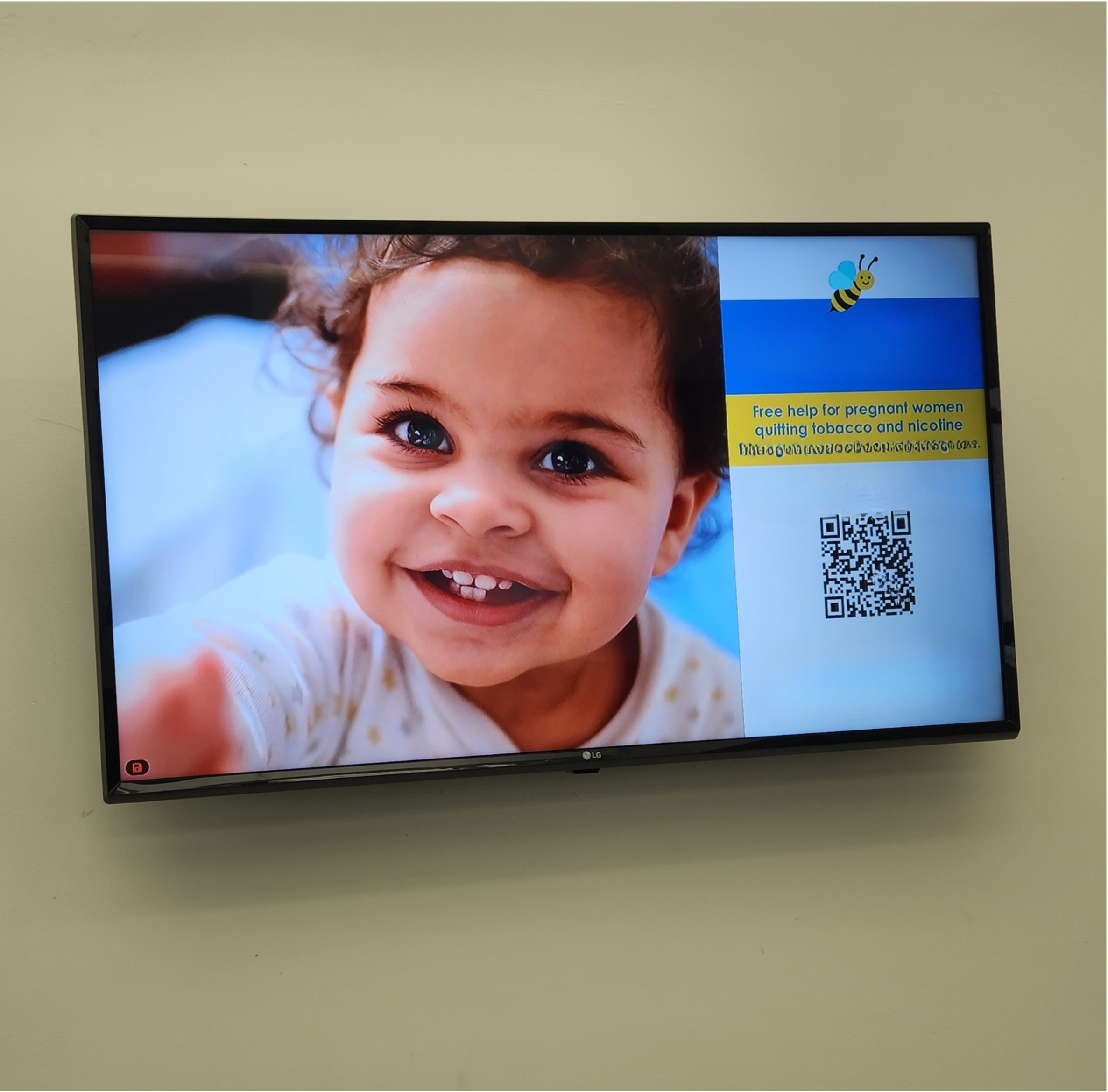Point-of-Care Advertising at Clinics, Hospitals & Pharmacies
Reach patients and caregivers at decision-making moments. PlaceBased activates clinic waiting rooms, urgent care and specialty practices, and retail/independent pharmacies with audited DOOH and print—geo-targeted OOH by ZIP and available in English and Spanish. Point-of-care is the most trusted information channel among exposed patients (POCMA/Ipsos, 2025), which is why our campaigns focus on credibility and context.

What is Point-of-Care Media?
Point-of-Care Media (POC) encompasses digital displays, educational materials, interactive kiosks, and printed content strategically placed throughout healthcare facilities. This targeted Point-of-Care Advertising approach reaches patients when health is already top-of-mind, creating optimal conditions for message retention and engagement.
Educate Patients at the Point-of-Care
Place-based out-of-home (POC) advertising is a powerful tool for driving prescription lift by reaching patients and healthcare providers at critical moments in their daily routines. By delivering targeted health messages in locations like pharmacies, clinics, and healthcare facilities, POC engages consumers when health is already at the top of their minds.
Point-of-Care is the most trusted information channel among exposed patients (POCMA/Ipsos 2025)
Independent research shows point-of-care is the most trusted channel among exposed patients (POCMA/Ipsos, 2025), which is why we activate clinics, hospitals, and pharmacies for public-health and healthcare campaigns.
Reporting & Audits - Transparent and compliance-friendly delivery
Performance summaries: Weekly/monthly impression reports with methodology notes (venue counts, flight dates, exceptions).
Venue-level proof of posting: Time-stamped, geo-tagged photos and verification for each location
Attribution options: QR code and vanity URL tracking, UTM tagging, and call/text short codes (optional).
Delivery breakdowns: Heat maps and tables by ZIP/county, venue type, and language split (Eng/Span).
Quality controls: Brand-safety/compliance checks, change-log of swaps/moves, and bonus materials
Final wrap: Consolidated audit rate, total impressions, engagement metrics, bonus value delivered, and next-step recommendations.
Understanding Point-of-Care Advertising
This healthcare advertising and media format represents a sophisticated marketing approach that delivers targeted health messages directly to patients within healthcare environments. This strategic Point-of-Care Marketing methodology reaches consumers at pivotal moments when they're actively engaged with their health and wellness decisions, creating unparalleled opportunities for meaningful brand engagement.
The Power of Contextual Healthcare Marketing
Point-of-Care Media strategically positions advertisements in high-impact locations, including physician offices, hospitals, specialty clinics, and pharmacies. This placement capitalizes on patients' heightened health awareness and receptivity to medical information, resulting in significantly higher engagement rates compared to traditional advertising channels.
The extended dwell times inherent in healthcare settings—from waiting room visits to consultation periods—provide brands with valuable attention windows. During these moments, patients demonstrate increased openness to health-related content and are more likely to engage with materials that could influence their treatment decisions. The clinical environment itself lends institutional credibility to Point-of-Care Advertising messages, distinguishing them from conventional marketing approaches that patients may perceive as intrusive or irrelevant.
Selecting Effective Channels for Point-of-Care Advertising.
Choosing the right channels in point-of-care environments involves understanding the patient journey and the touch-points where they are most receptive. Whether it's digital signage, printed educational materials, or interactive applications, the medium should enhance the message's accessibility and relevance.
Venue-level proof of posting: Time-stamped, geo-tagged photos and verification for each location
Digital Displays and Screens: These are often used in waiting areas, lobbies, and patient rooms. They can show health-related information, educational content, or promotional material about healthcare services and products.
Interactive Kiosks: These touch-screen displays provide patients with access to health information, educational materials, and interactive content, such as symptom checkers or healthcare service directories.
Printed Materials: This includes brochures, pamphlets, posters, and flyers, often found in waiting areas and examination rooms. They provide educational and promotional content about various health conditions, treatments, and healthcare services.
Waiting Room Television Networks: Custom TV networks in waiting areas showcasing a mix of health education and wellness programming, along with promotional content.
Mobile POC Advertising: Privacy-safe, geofenced audiences and contextual placements that complement in-venue POC media—without using sensitive personal health data.
Benefits of Point-of-Care Advertising:
Point-of-Care marketing offers several benefits for both advertisers and patients in healthcare settings:
Targeted Reach: Advertisers can target a specific audience based on the healthcare setting, such as doctors' offices or pharmacies, ensuring their messages reach relevant and interested patients.
Captive Audience: Patients waiting for appointments or receiving care are a captive audience, providing advertisers with an opportunity to engage with them during this downtime.
Increased Awareness: Point-of-care media can raise awareness about specific health issues, medical treatments, preventive measures, and available products or services.
Educational Content: It allows for the delivery of educational content, providing patients and HCPs with valuable health information and promoting wellness.
Health Promotions: It enables healthcare providers to promote health campaigns, vaccination drives, and disease prevention efforts.
Measurable Impact: Advertisers can track the performance of Point-of-Care media campaigns and gather data on patient engagement and responses.
Point-of-Care media offers a unique and effective way for advertisers to communicate with patients in healthcare settings while providing valuable information and improving the patient experience.
Identifying Your Audience for Point-of-Care Advertising.
Understanding your audience in point-of-care marketing is about more than demographics. It's about understanding their healthcare journey, their concerns, and their information needs. Tailoring your approach to meet these needs is essential for effective communication.
Your message in point-of-care marketing should be clear, empathetic, and relevant to your audience's healthcare experience. Focus on providing value through information and support, rather than just promoting a product or service.
Let’s Talk.






